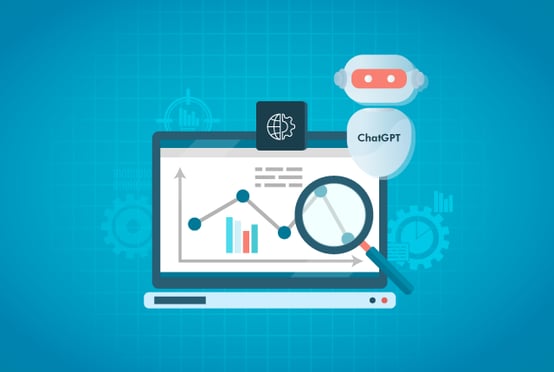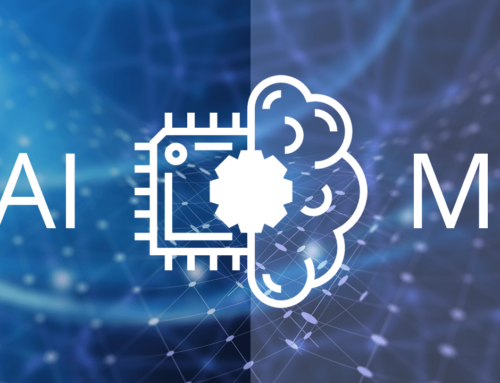
Log analysis is a critical aspect of the quality assurance (QA) process, enabling testers and developers to uncover defects, diagnose issues, and enhance application performance. To meet the growing demand for efficient and accurate log analysis, organizations are increasingly adopting automated log data analysis like ChatGPT. In this article, we will explore how leveraging ChatGPT enhances log analysis, boosts productivity, and delivers exceptional testing outcomes.
Streamlined Log Analysis
Manual log analysis can be a laborious and error-prone task, hindering the efficiency of the testing process. However, with the integration of ChatGPT, organizations can revolutionize log analysis by automating and optimizing the entire workflow, saving valuable time for test engineers.
-
Unleashing Accurate Error Analysis
Harnessing advanced ML algorithms, ChatGPT excels at log data analysis and swiftly identifying errors and exceptions. Its ability to recognize patterns and structures within log messages, such as stack traces or error codes, empowers it to comprehend the context and language used. As a result, ChatGPT ensures accurate error identification, enabling proactive measures to be taken swiftly.
-
Empowering Debugging Support
In the realm of log analysis, ChatGPT serves as a reliable ally, providing robust debugging support. Automating log data analysis, ChatGPT reveals the intricate sequence of events that lead to an issue, offering invaluable insights into the root cause. Test engineers can leverage ChatGPT’s guidance to accelerate the debugging process and facilitate effective issue resolution, ultimately reducing valuable time and effort.
-
The Art of Natural Language Processing (NLP)
ChatGPT’s proficiency in NLP takes log analysis to new heights by understanding the context and language used in log messages. It effortlessly identifies relevant keywords, phrases, and indicators of potential issues. Armed with this contextual understanding, test engineers can swiftly identify anomalies and take proactive measures to resolve issues promptly.
-
Embracing Predictive Analytics for Proactive Issue Resolution
The integration of ChatGPT’s predictive analytics capability empowers test engineers with a formidable tool for foreseeing potential issues. By analyzing historical logs and test results, ChatGPT identifies intricate patterns and trends, enabling proactive measures to be taken before issues arise. This ability to predict and prevent issues before they impact end users save substantial time and effort that would otherwise be spent on reactive troubleshooting.
Overview of How ChatGPT Can Be Used to Automatically Parse and Log Data Analysis
To leverage ChatGPT’s capabilities for automatically parsing and analyzing log data, the following steps can be followed:
-
Data Collection
The initial step involves collecting log data from various sources. This can be done either through a log collection tool or by manually gathering the log data. Once collected, the data is stored in a centralized location for further analysis.
-
Data Preprocessing
Preprocessing the log data is crucial to ensure its quality and relevance. ChatGPT assists in automating this step by employing NLP techniques to understand the context and language used in log messages. It helps in cleaning the data, removing noise or irrelevant information, and preparing it for effective analysis.
-
Analysis of Preprocessed Data
After the preprocessing stage, the log data is ready for analysis. ChatGPT applies its advanced machine learning algorithms to analyze the data, uncover patterns, detect trends, and provide valuable insights into potential issues. Additionally, through predictive analytics, ChatGPT can forecast when specific issues are likely to occur, empowering proactive measures.
-
Integration with Third-Party Tools
ChatGPT seamlessly integrates with third-party log analysis and monitoring tools, enhancing the overall log analysis experience. For instance, it can be integrated with monitoring tools to provide real-time insights into application performance, allowing for prompt responses to potential issues.
By following these steps, organizations can harness the power of ChatGPT to automate the parsing and analysis of log data. This automated approach not only saves time and effort but also improves the accuracy and effectiveness of log analysis, leading to optimized application performance and enhanced user experience.
Remember, with ChatGPT, log analysis becomes a streamlined and efficient process, paving the way for improved software quality and reliability.
The Benefits of Automated Log Analysis
The adoption of automated log analysis offers a multitude of benefits that significantly impact the QA process:
-
Unmatched Efficiency
Automation reduces the time required for log analysis, eliminating manual efforts and accelerating the overall process.
-
Cost-effectiveness
Automated log analysis optimizes resource utilization, minimizing costs associated with manual analysis, and maximizing return on investment.
-
Enhanced Scalability
ChatGPT’s scalability empowers organizations to analyze vast volumes of log data effortlessly, making it an ideal solution for dealing with large amounts of information.
-
Seamless Tool Integration
The seamless integration of ChatGPT with third-party tools ensures a cohesive log analysis experience, providing real-time insights and maximizing productivity.
-
Proactive Issue Identification
Automated log analysis, driven by ChatGPT’s predictive analytics, enables proactive identification of potential issues, minimizing the impact on end-users.
-
Accelerated Issue Resolution
The insights provided by ChatGPT regarding the root cause of an issue expedite the resolution process, allowing test engineers to fix issues quickly and effectively.
-
Leveraging Historical Log Data
Analyzing historical log data unveils valuable trends and patterns, enabling organizations to make data-driven decisions, optimize performance, and improve application reliability.
How ChatGPT Can Be Used To Identify Exceptions in Log Data and Identify Specific Use Cases?
Some of the key applications of ChatGPT in identifying exceptions in log data:
-
Stack Trace or Error Codes
ChatGPT excels at recognizing specific patterns or structures within log messages, such as stack traces or error codes. By identifying these patterns, it can swiftly pinpoint potential issues and exceptions within the log data.
-
Integration into Existing Log Analysis Tools
ChatGPT seamlessly integrates into existing log analysis tools, complementing their functionality and providing additional insights into log data. By leveraging ChatGPT’s capabilities alongside other tools, organizations can enhance their ability to identify and resolve exceptions.
-
Recognition of Specific Patterns or Structures
ChatGPT’s proficiency extends to recognizing specific patterns or structures within log messages. This includes identifying stack traces or error codes, allowing for efficient identification of potential issues and exceptions within log data.
-
Analysis of Historical Log Data
By analyzing historical log data, ChatGPT can uncover patterns and trends that provide valuable insights into the application’s performance over time. This enables the identification of potential issues before they occur, facilitating proactive measures to prevent exceptions.
-
NLP Capabilities of ChatGPT
Leveraging NLP, ChatGPT comprehends the context and language used in log messages. This enables the identification of keywords and phrases that signify an issue and provides actionable insights on how to address them effectively.
Through these applications, ChatGPT significantly contributes to the identification of exceptions in log data. By leveraging its capabilities, organizations can streamline their log analysis processes, improve issue detection and resolution, and ultimately enhance the overall reliability and performance of their applications.
Log Analysis using ChatGPT: Limitations
While ChatGPT offers significant benefits for log analysis, it is crucial to acknowledge certain limitations and challenges associated with its use. Here are some key considerations:
-
Accuracy of the Analyzed Log Data
The accuracy of the analyzed log data heavily relies on the quality of the training data used to train the ChatGPT model. If the training data is of low quality, it may impact the accuracy of the analyzed log data.
-
Interpretation of Log Data
Interpreting log data can be complex, particularly when dealing with intricate systems. ChatGPT can automate the interpretation process to a certain extent, but ensuring the accuracy and reliability of the insights provided by ChatGPT is essential.
-
Limited Scalability and Flexibility
ChatGPT may face limitations in scaling up to analyze large volumes of log data or adapting to new use cases without additional training and customization.
-
Machine Learning Reliability
The reliability of machine learning models, including ChatGPT, relies on the quality of the training data and the performance of the model itself. Monitoring the model’s performance and retraining it as needed is important.
-
Data Privacy Concerns
Log data often contains sensitive information that requires protection. It is crucial to ensure that log data is stored and processed securely to safeguard sensitive information.
Impact of ChatGPT Log Analysis on QA Processes
In the realm of quality assurance (QA), log analysis plays a vital role in ensuring the reliability and stability of software applications and systems. ChatGPT’s log analysis capabilities can have a significant impact on QA processes. Here are some ways ChatGPT can contribute:
-
Increased Efficiency
Automated log analysis using ChatGPT enhances the efficiency of QA processes by reducing the time and effort required for log data analysis.
-
Reduced Human Error
Automated log analysis minimizes the risk of human error by eliminating the need for manual log analysis and interpretation.
-
Improved User Experience
ChatGPT’s automated log analysis aids in identifying and resolving issues before they impact end-users, resulting in an enhanced user experience.
-
Early Issue Detection
ChatGPT employs predictive analytics to proactively identify potential issues, allowing QA teams to take preventive measures before problems arise.
-
Better Risk Management
Automated log analysis with ChatGPT assists in improved risk management by identifying potential issues in advance and enabling timely mitigation.
-
Time-Saving
ChatGPT’s automated log analysis saves valuable time that would otherwise be spent on manual log data review, enabling QA teams to focus on other critical tasks.
-
Faster Issue Resolution
ChatGPT provides insights into the root cause of issues, expediting the resolution process for QA teams and facilitating efficient problem-solving.
How ChatGPT Saves Time for Test Engineers in the Testing Process through Log Data Analysis?
ChatGPT significantly reduces the time spent by test engineers in the testing process by automating log data analysis. By leveraging ChatGPT, test engineers can benefit from faster and more efficient log analysis. Key points highlighting the time-saving advantages of ChatGPT in the testing process through log data analysis include:
-
Automation
ChatGPT automates the log analysis process, eliminating the need for manual analysis and saving valuable time.
-
Proactive Measures
ChatGPT’s insights into potential issues enable test engineers to take proactive measures, reducing the time spent on reactive problem-solving.
-
Enhanced Efficiency
By streamlining the log analysis process, ChatGPT improves overall testing efficiency, allowing test engineers to allocate more time to other critical tasks.
While ChatGPT offers time-saving benefits, it’s important to acknowledge the potential limitations and challenges, such as the need for high-quality training data and monitoring the reliability of machine learning models. Nevertheless, ChatGPT is a powerful tool that can save time for test engineers in the testing process by analyzing log data and providing valuable insights into application performance.
Conclusion
By embracing ChatGPT for automated log analysis, organizations can transform their QA processes and achieve unparalleled efficiency, cost-effectiveness, and scalability. QASource, a leading testing solution provider, plays a crucial role in this transformation. With years of expertise in software testing and a deep understanding of log analysis, QASource can assist organizations in implementing ChatGPT effectively and maximizing the benefits of automated log analysis. Our comprehensive testing solution, combined with ChatGPT’s capabilities, empowers businesses to streamline their log analysis processes, save valuable time and resources, and ensure robust and reliable software performance.
So, why settle for conventional log analysis methods when ChatGPT opens the doors to a new era of efficient and effective log analysis? Embrace automation, embrace ChatGPT, and leverage the expertise of QASource to unlock the true power of log analysis today.
Author: Timothy Joseph
Source: https://blog.qasource.com/efficient-log-analysis-with-chatgpt-boosting-qa-efficiency
